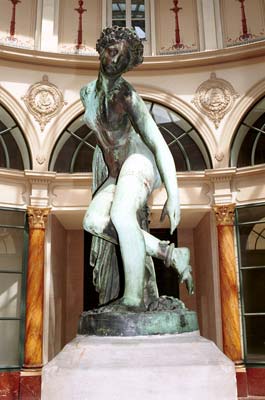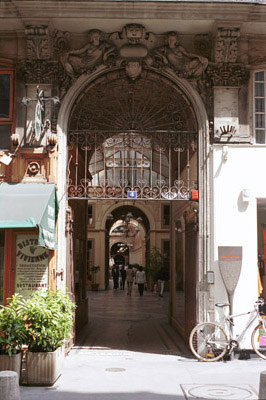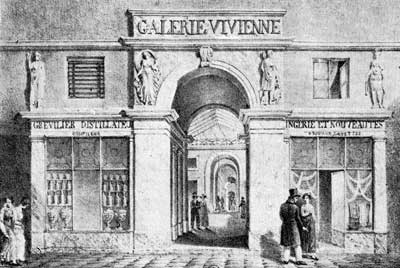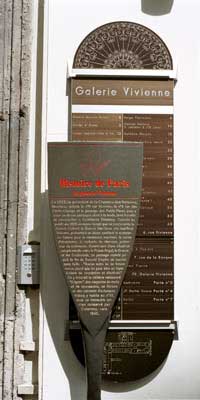![]()
This page is also available in French
![]()
The two adjacent galleries, Galerie Colbert and Galerie Vivienne, were built in the mid 1820s and opened as fashionable shopping arcades. Nowadays there are still shops in the Galerie Vivienne, but no longer in the Galerie Colbert, which houses the Institut National d’Histoire de l’Art. They were both acquired by the Bibliothèque Nationale.
While Berlioz was locked in the buildings of the Institut de France writing his cantata Sardanapale for the Prix de Rome of 1830, the July revolution broke out; as soon as he had finished his cantata, Berlioz went out in the streets of Paris to share in the extraordinary atmosphere. In his Memoirs (chapter 29) he gives a vivid description of those heady days. It was in Galerie Colbert, that Berlioz received then what he calls ‘an impression, or more exactly a musical shock, of extraordinary violence’. He had been taking part in singing with the crowds in the streets, with such success that the numbers kept swelling, and Berlioz and his crowd of singers had to run for cover:
When we reached Galerie Colbert which leads to rue Vivienne, surrounded and pressed like bears at a fair, we were urged to resume our singing. A haberdasher, whose shop opened on the glass rotunda of the gallery, invited us to go up to the first floor of her shop, from which we could, without the risk of being suffocated, pour out our floods of harmony on our enthusiastic admirers. The proposal was accepted, and we started the Marseillaise. At the first bars the noisy crowd stirring beneath us stopped and fell silent. […] After the second stanza, they persisted in their silence; after the third, the same silence. That was not to my liking. At the sight of this immense gathering of people, I recalled that I had just arranged Rouget de Lisle’s song for large orchestra and double chorus, and that instead of the words: tenors, basses, I had written in the score: Everyone who has a voice, a heart and blood in his veins. Ah! I said to myself, this is what I want. I was therefore extremely disappointed by the obstinate silence of my audience. At the 4th stanza I could no longer contain myself and shouted ‘For God’s sake, sing!’' The crowd then roared their Aux armes, citoyens! with the precision and power of a trained choir. You must remember that the arcade which ends at the rue Vivienne was full, that the one leading to the rue Neuve-des-Petits-Champs was also full, as was the area of the central dome, and that these four or five thousand voices were packed in a reverberant area that was closed, to the right and the left by the wooden shutters of the shops, above by the glass of the roof, and below by the flagstones of the arcade. Remember also that the majority of these men, women, and children were still breathless with the excitement of the previous night’s fighting. You can then imagine the impact of this electrifying refrain. For myself, I literally fell to the ground, and my little band of singers, terrified by this explosion, was struck completely dumb, like birds after a thunderclap.
![]()
All the photographs reproduced on this page were taken by Michel Austin; the engraving is our own collection. © Monir Tayeb and Michel Austin. All rights of reproduction reserved. Our thanks to Olivier Mabille for help in identifying the pictures.









(Large view)
(Large view of the notice alone)
![]()
© Monir Tayeb and Michel Austin for all the pictures and information on this page.
Copyright notice: The texts, photos, images and musical scores on all pages of this site are covered by UK Law and International Law. All rights of publication or reproduction of this material in any form, including Web page use, are reserved. Their use without our explicit permission is illegal.